10 US cities built up by specialized manufacturing
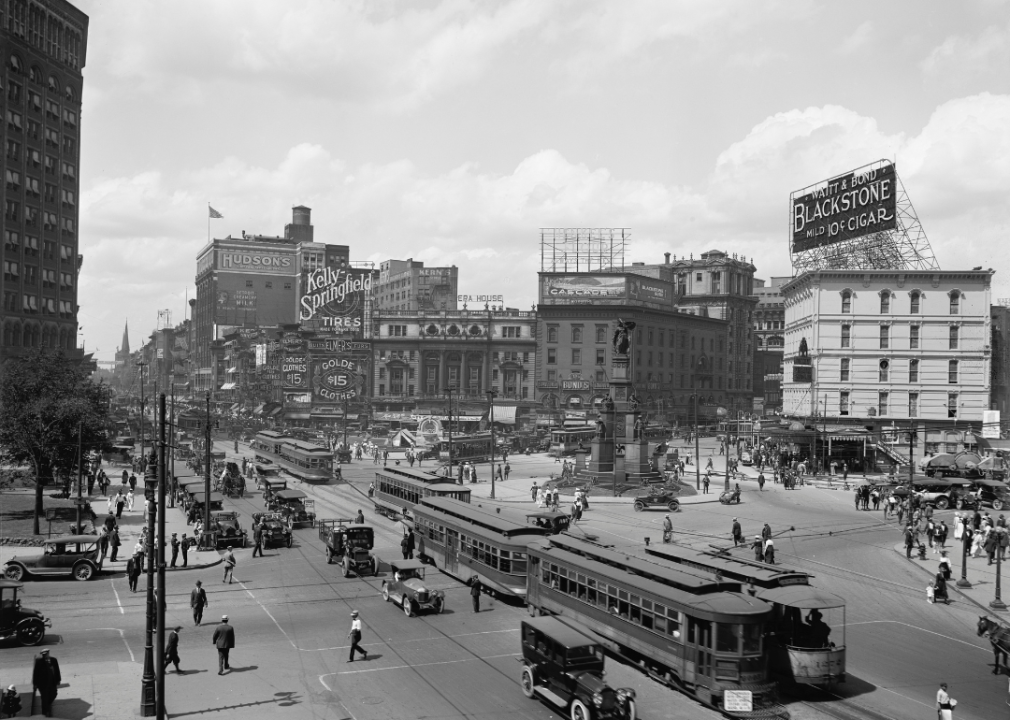
Universal History Archive/Universal Images Group // Getty Images
10 US cities built up by specialized manufacturing
A busy Detroit intersection, circa 1915.
Few other forces have transformed the United States as dramatically as industrialization. Throughout most of the 19th century, the country was primarily agricultural. In 1880, nearly half of the workers were farmers, and 7 in 10 people lived in rural areas. Those demographics shifted as the country underwent its industrial revolution in the late 19th and early 20th centuries. By 1920, most Americans lived in urban centers, and 20% of workers held manufacturing jobs.
A combination of factors allowed the United States to undergo this transformation, including access to natural resources and the expansion of railroads and road networks. The impact of immigration also cannot be understated. According to a study published in Social Science Research, half of those working in manufacturing in 1920 were first and second-generation immigrants; including third-generation immigrants in the count increases that number to two-thirds. This diverse workforce spurred innovation, and the significance of that contribution continues to be acknowledged, including in a Brookings report that demonstrates the impact of Black inventors during industrialization.
Along with these tidal shifts came consequences that still define the country, including furthered racial inequality and segregation, regional divides, and profound and perhaps irreversible environmental havoc. Looking back upon this industrial history reveals such defining moments, both positive and negative.
America’s cities are case studies in these socioeconomic and geopolitical shifts. As highlighted in a 2018 Brookings study, examining older industrial cities and their histories can help guide their revitalization, which is an essential task for the future of urban prosperity. To investigate this relationship further, Machinery Partner looked into the industrial histories of 10 major U.S. cities and how manufacturing helped their economies develop into what they are now.
![]()
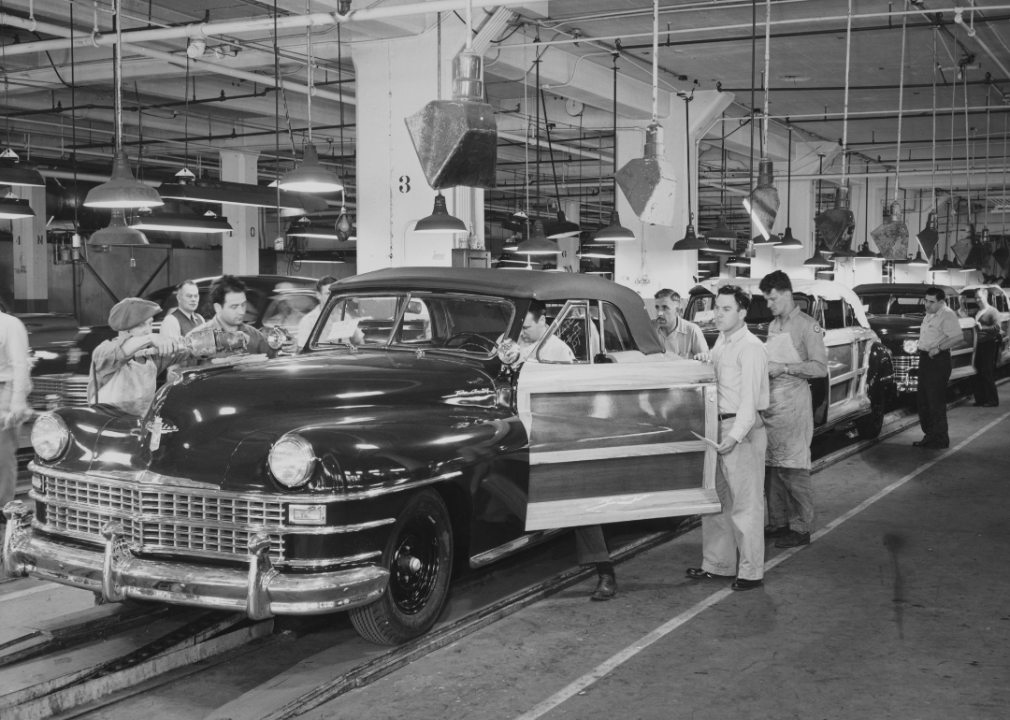
FPG/Archive Photos // Getty Images
Detroit
Automobile workers on the production line at the Chrysler Assembly Plant in Detroit.
Detroit’s rise and fall as the auto manufacturing epicenter of the country has defined the city’s culture, legacy, demographics, and very identity—so much so that the earliest phase of its industrial history gets eclipsed. In fact, by the time the auto industry arrived in Detroit in the early 20th century, the city was already a small industrial center.
From 1870 to 1900, Detroit’s population increased from 79,577 to 285,704, reflecting the rapid growth of businesses, including train car manufacturer American Car & Foundry and Detroit Copper and Brass, which would eventually supply parts for the auto industry. However, the founding of the big three automakers in Detroit—Ford Motor Company in 1903, General Motors in 1908, and Chrysler in 1925—would spark explosive change.
By 1930, the city’s population had increased to 1.5 million, making it the fourth-largest city in the nation. By 1950, Detroit’s auto manufacturing industry employed 296,000 people, and the city produced a significant share of the world’s automobiles.
This prosperity declined gradually during the 1970s and ’80s with automation and international competition, and then dramatically when the Great Recession bankrupted Chrysler and GM in 2009. Detroit followed suit when it declared bankruptcy in 2013.
In more recent years, Detroit has initiated an urban revival, using some of the same geographic and urban industrial advantages that initially transformed it into the Motor City.
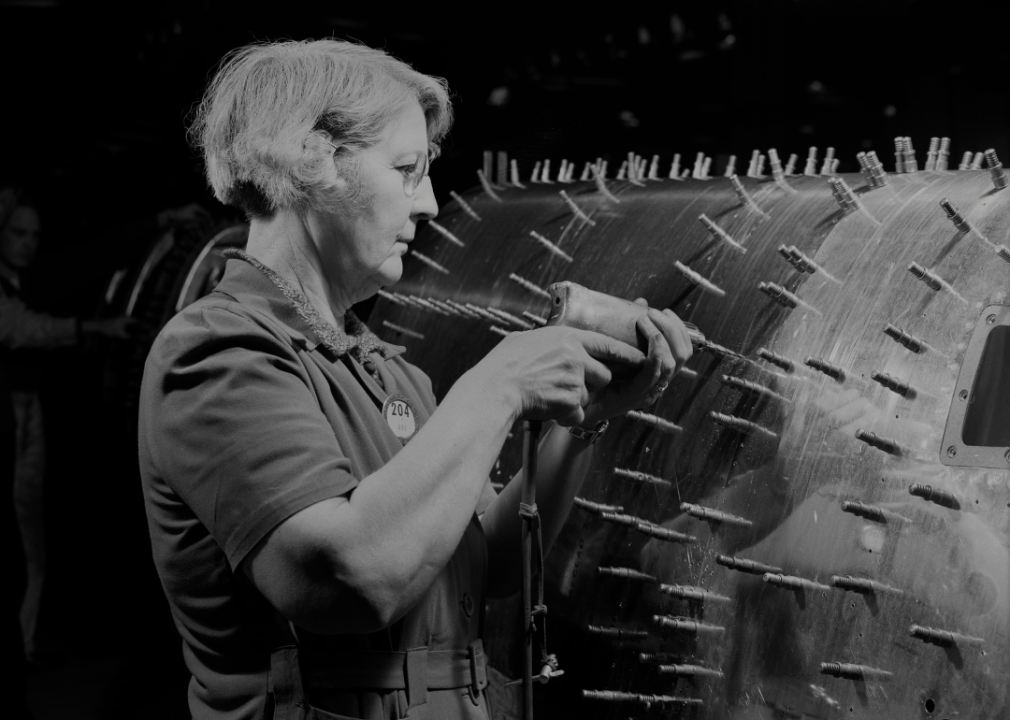
GHI/Universal Images Group // Getty Images
Seattle
A woman drilling holes in a B-17F Flying Fortress at Boeing in Seattle.
Throughout most of the late 19th and early 20th centuries, Seattle’s industry revolved around lumber and coal, fishing, transportation, and shipbuilding. However, William E. Boeing’s founding of Boeing Airplane Company in 1916 redefined the city as an aerospace manufacturing hub.
In 1967, to build the newly designed Boeing 747, the company constructed the Boeing Everett Factory, which was and remains (owing to continued expansions) the largest factory by volume in the world. At its peak in 1968, Boeing employed 142,672 people directly, two-thirds to three-quarters of whom worked in Washington state. The technical expertise of this workforce likely contributed to Seattle’s draw for tech giants like Microsoft and Amazon, which both have headquarters in the city.
Today, Boeing remains a significant force in Seattle, employing 66,792 workers as of the end of 2023. Overall, the aerospace industry employs 102,000 people in greater Seattle, and the tech industry supports around 290,000 jobs.
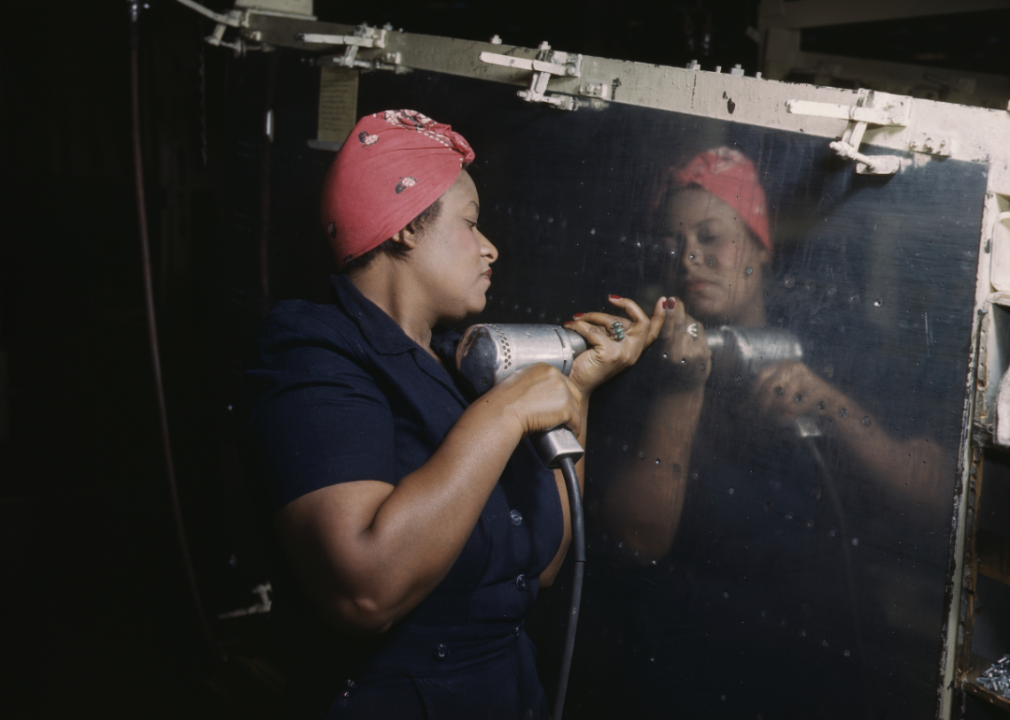
Heritage Art/Heritage Images // Getty Images
Nashville
A woman, who is wearing the classic Rosie the Riveter outfit with a red scarf on her head and a blue jumpsuit, working on a Vengeance dive bomber airplane.
Iron production defined Nashville’s early industrial history; the city is near a historically abundant source of brown iron in the Western Highland Rim. By 1860, Tennessee ranked third nationally in iron output, though the industry collapsed after the Civil War. Recent reexaminations of history have highlighted how significantly enslaved people contributed to Tennessee’s early iron industry, further emphasizing the degree to which racism has shaped America’s economic and industrial legacy.
Nashville’s next life in industry came in the 1920s when manufacturing took off due to the city’s easy boat and rail access, producing nationally relevant companies such as the General Shoe Company and Werthan Bag Company.
Today, while Nashville is best known as Music City, the Bureau of Labor Statistics lists its top industries as office and administrative support, as well as transportation and moving. However, recent redevelopment projects have made use of former industrial sites to revitalize the city, turning former brownfields into mixed-use neighborhoods.
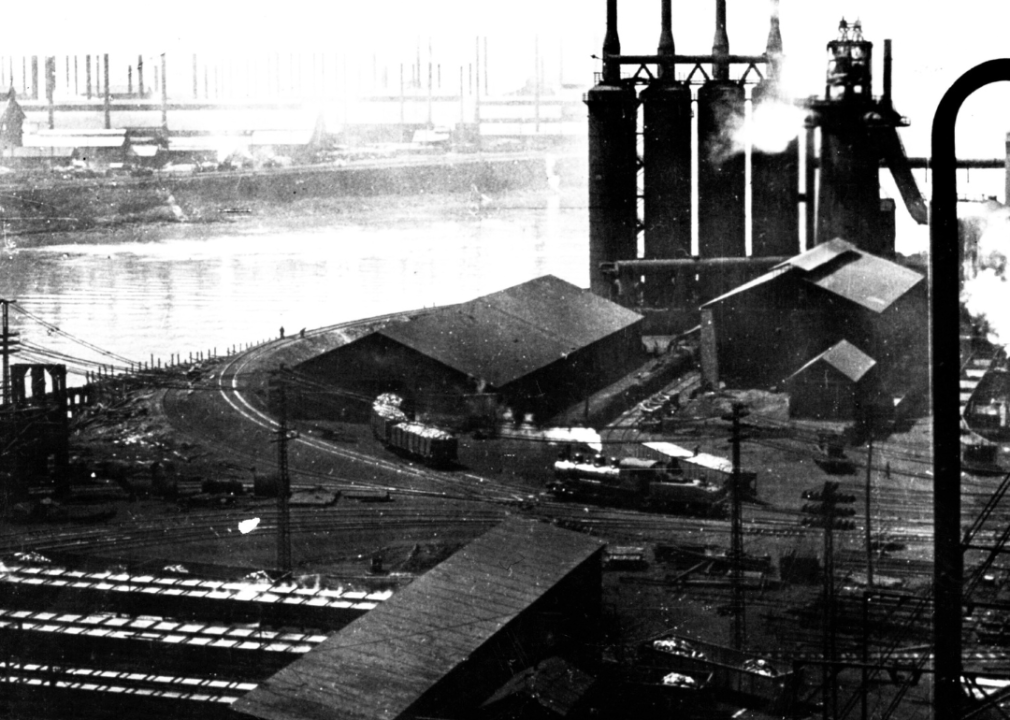
Hulton Archive // Getty Images
Pittsburgh
The blast furnaces and rolling mills of the Homestead Steel Works in Pittsburgh.
Pittsburgh was a major player in the nation’s steel industry—apt for a city that named its football team the Steelers. Production began in 1875, when Andrew Carnegie founded Edgar Thomson Works, though the city had a preexisting ironworks industry that eased the transition to steel.
From 1870 to 1910, Pittsburgh’s population soared from 86,076 to 533,905, and Allegheny County’s overall population exceeded 1 million. In 1901, J.P. Morgan led a consolidation of the steel industry, creating the U.S. Steel Company—by 1910, it produced 60% of the country’s steel.
Pittsburgh continued to be an international leader in steel production through the 1950s, but with globalization and a slowdown in demand in the 1970s and ’80s, the industry collapsed. The city has since redefined itself as a tech hub, serving as home to Duolingo’s and Google’s regional headquarters, the latter of which is in the former Nabisco factory. Pittsburgh has also become a hub for health care and education institutions, including Carnegie Mellon University and the University of Pittsburgh Medical Center.
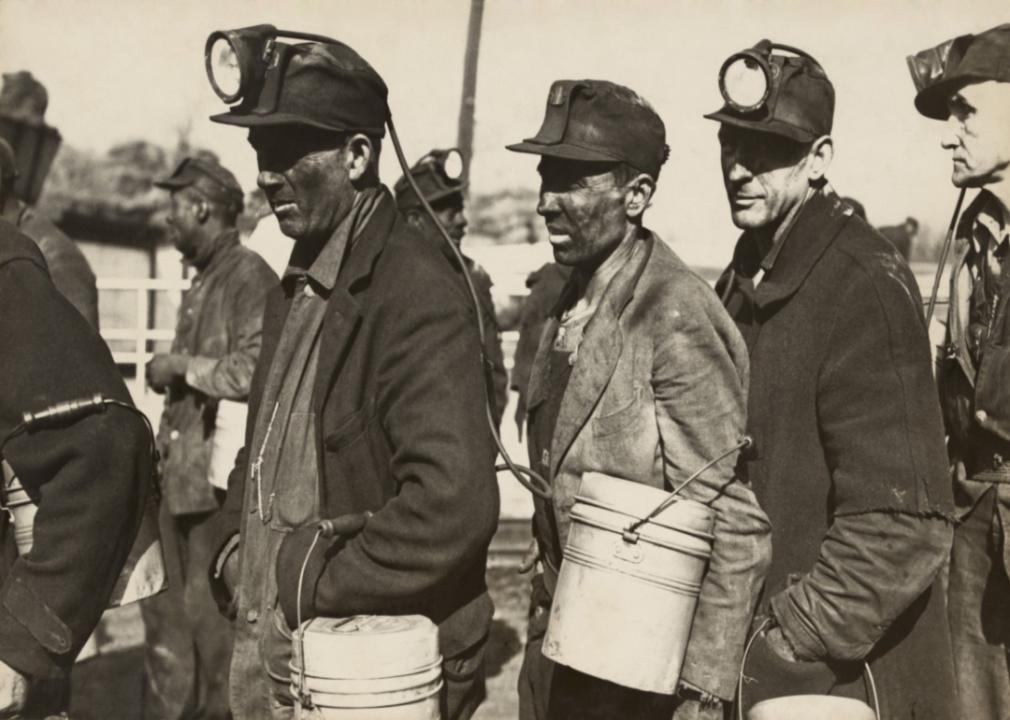
Everett Collection // Shutterstock
Birmingham
Birmingham coal miners lined up.
Birmingham is in Alabama’s Jones Valley, a geographically unique location that contains coal, limestone, and iron—the three materials needed to make commercial iron and steel. This geographic advantage led to a thriving industry and the growth of companies like Tennessee Coal, Iron, and Railroad Company.
But in 1907, U.S. Steel bought up local steel factories, including TCI. It later instituted what was known as “Pittsburgh Plus,” a fee placed on shipments from Alabama to weaken competition with Pittsburgh steel producers. TCI, and later U.S. Steel, also used convict labor until 1912, a practice wherein states arrested primarily Black men on minor charges, then leased them to companies as free labor.
The eventual dismantling of this system, coupled with the Great Depression, stagnated Birmingham’s steel industry until the ’50s, when it briefly surged, only to fall again in the wake of the globalizing forces that were changing American manufacturing and production nationally.
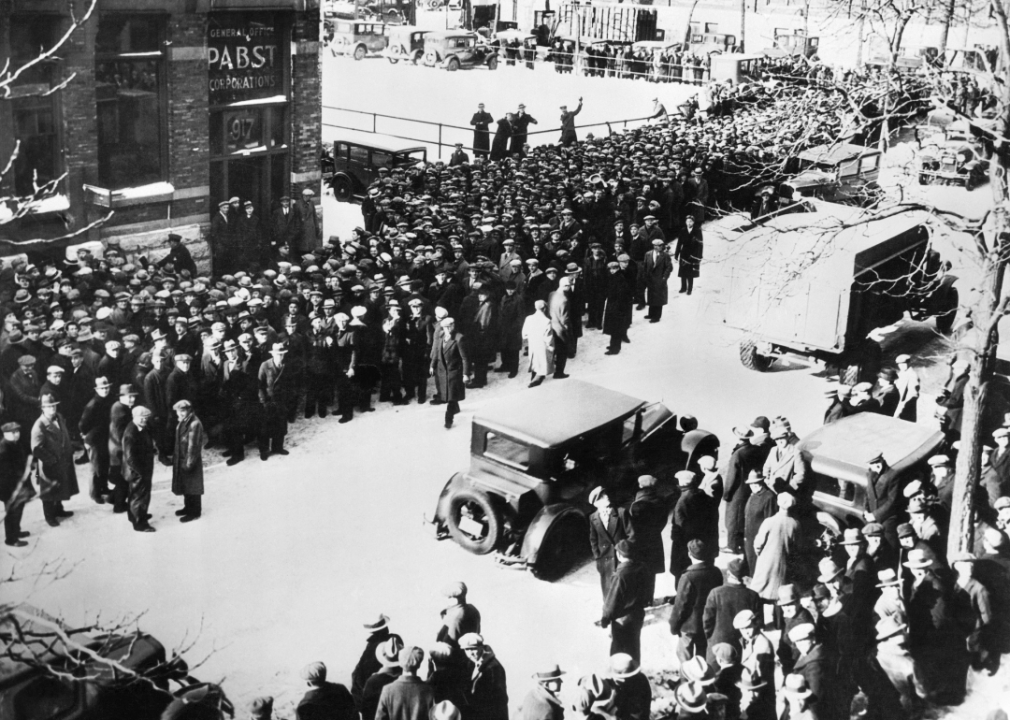
Underwood Archives/Contributor // Getty Images
Milwaukee
Milwaukee citizens at Pabst brewery in search of jobs.
Known as Brew City, Milwaukee has a history of brewing stretching back to the 1840s when German and Welsh immigrants formed more than 30 breweries in 20 years. Some would become international brands that are still around today, including Pabst, Miller, and Schlitz. The industry’s success was due partly to the city’s access to the clean water of the Milwaukee River and its status as a port city on Lake Michigan.
From 1870 to 1900, the city’s population quadrupled from 71,440 to 285,315. The brewing industry suffered during Prohibition in the 1920s and ’30s, but Milwaukee’s big breweries ultimately recovered. Throughout most of the 20th century, brewing retained a strong industry presence in the city.
Today, a number of smaller breweries, including Lakefront and Sprecher, have inherited the city’s legacy. Of the bigger industrial brewers, only Miller remains. After an international merger, Miller also brews brands like Peroni and Pilsner Urquell in the city.
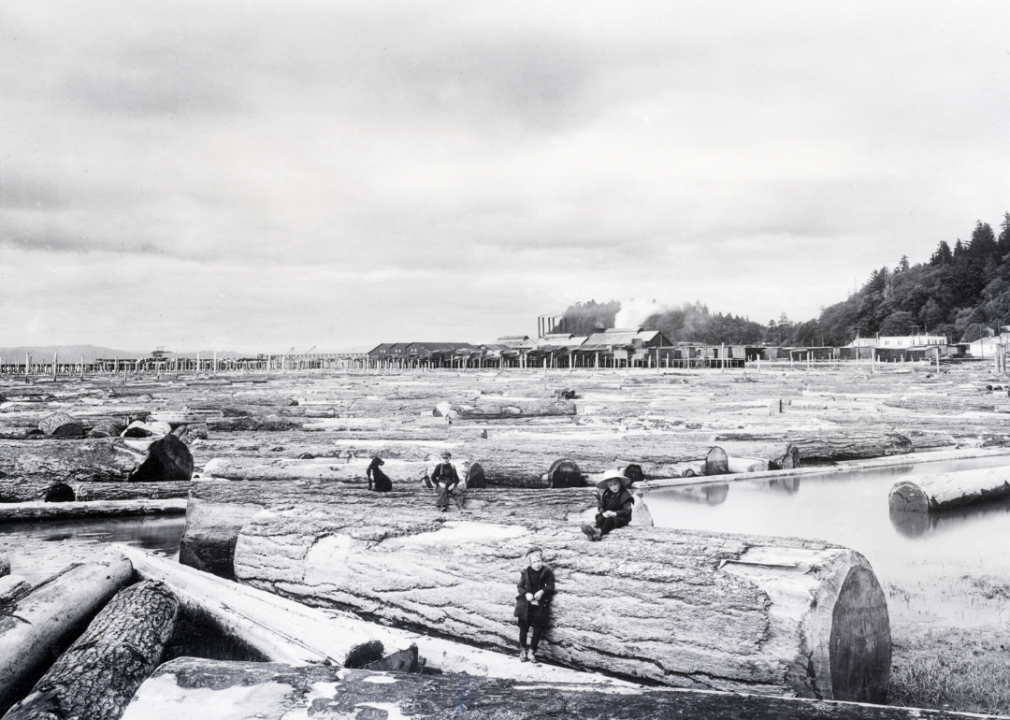
Bettmann/Contributor // Getty Images
Portland
A large sawmill in Portland.
On the heels of a program by the U.S. government called the Donation Land Act, white settlers began moving to Oregon en masse in the 1850s, displacing the Indigenous peoples living there.
As the Northern Pacific Railroad reached Portland in 1883, a lumber industry was developing on the heels of the depletion of the Midwestern forests, eventually turning the state of Oregon into the nation’s top producer of lumber by 1938. Beyond Portland’s nickname as Stumptown, timber still defines elements of the state’s identity today—over 61,000 people in Oregon are foresters, and Oregon State University is ranked second in the world for forestry by the Center for World University Rankings.
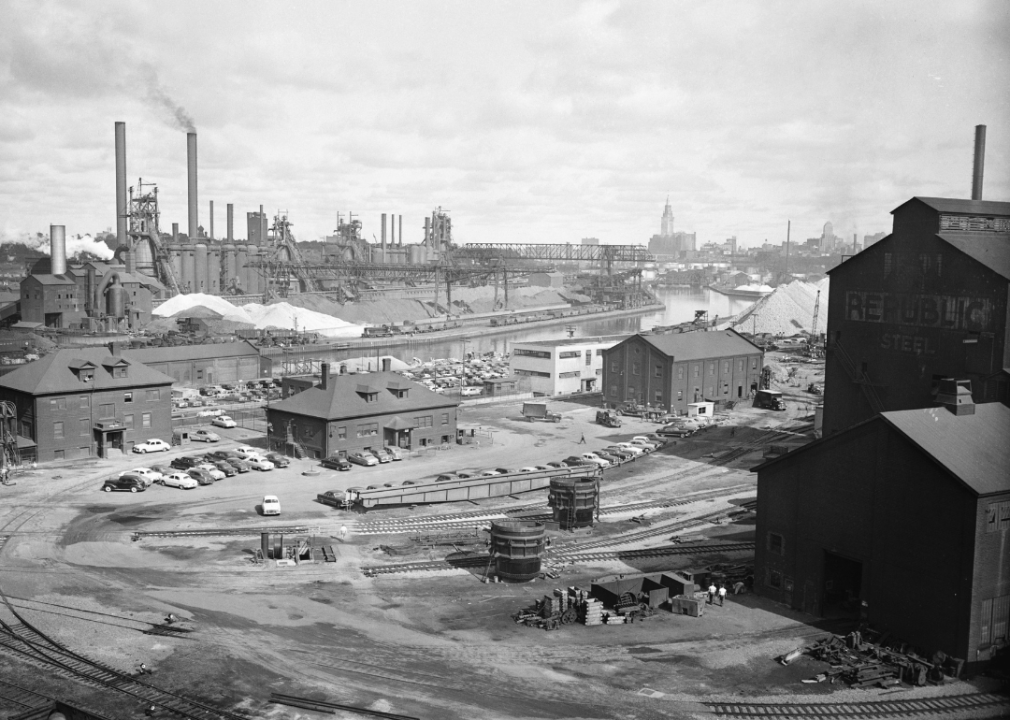
Bettmann // Getty Images
Cleveland
A wide view of the exterior of steel plant in Cleveland.
The completion of the Erie & Ohio Canal in 1832 marked Cleveland’s industrial start in earnest, and the city soon became known for iron and iron products such as steam engines, stoves, and building materials. Iron and steel dominated the city’s manufacturing from 1860 until 1930, with Cleveland second only to Detroit in its industrial worker population. John D. Rockefeller also began his oil business ventures in Cleveland in 1863, later forming Standard Oil, which by 1870 refined 90% of all oil in the U.S.
In the 1930s and ’40s, manufacturing in the city contributed significantly to the World War II economy, including work on the construction of the atomic bomb, as well as thanks to the company Cleveland Twist Drills, which made lathes, planers, and drill presses. Today, the Cleveland manufacturing field employs over 270,000 workers in a variety of industries including electronics, aerospace, and plastics.
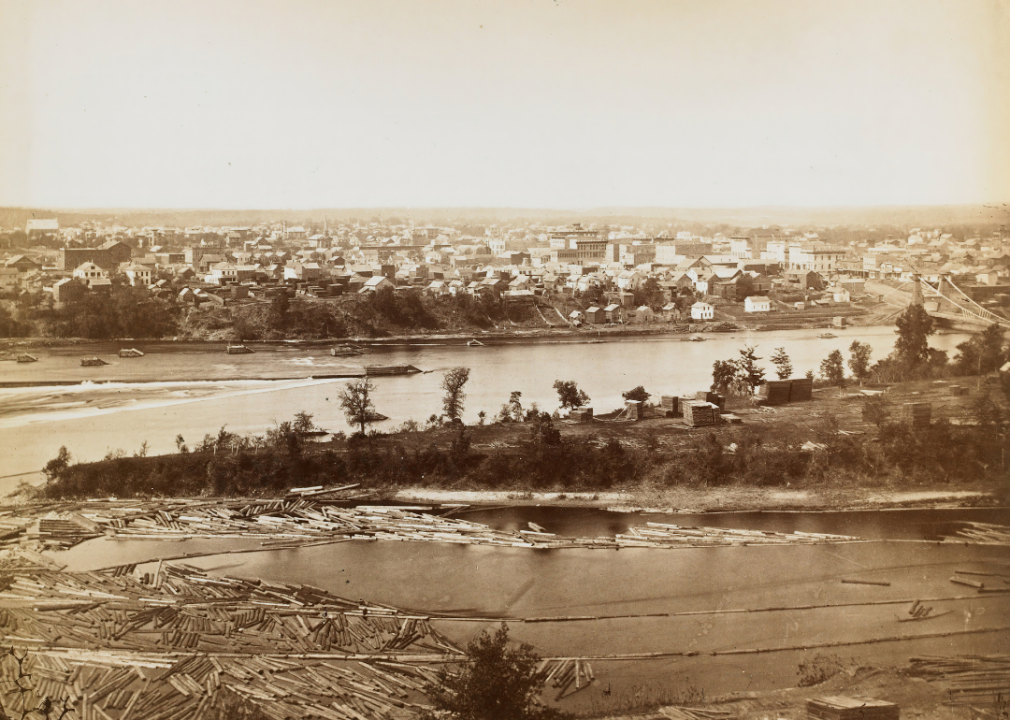
Sepia Times/Universal Images Group // Getty Images
Minneapolis
Logs in the water from a sawmill in Minneapolis.
Minneapolis largely owes its 50-year tenure as Mill City to one geographic feature: the 50-foot drop in the Mississippi River at St. Anthony Falls. Sawmillers harnessed the energy-generating potential of that drop from the 1840s until flour milling took over the city in the 1880s. From that time forward, the city was transformed—from 1870 to 1890, the population of Minneapolis ballooned from 13,000 to nearly 165,000. At the industry’s peak in 1916, the city’s mills produced 20 million barrels of flour, each containing 196 pounds of flour.
Minneapolis has repurposed its historic industrial waterfront into parks and cultural venues such as the Mill City Museum, the Guthrie Theater, and the Mill Ruins Park. The city is also home to 17 Fortune 500 companies, including Target, General Mills, and 3M, and it has the highest per capita medical technology employment in the country.
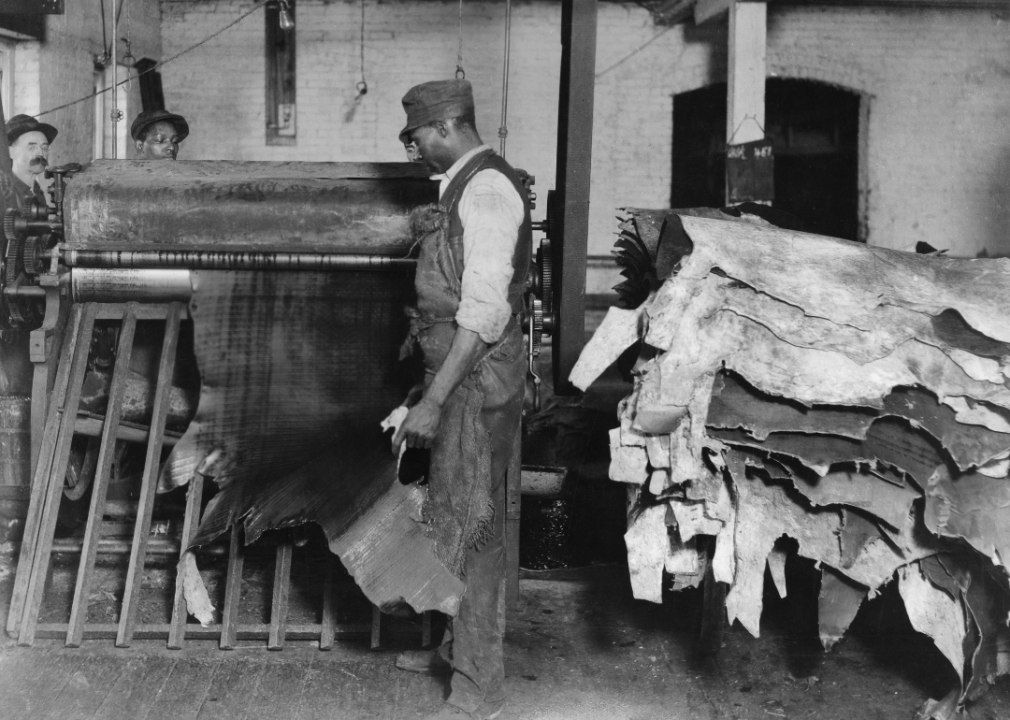
Keystone View Company/FPG/Archive Photos // Getty Images
Newark
A man operating a wringing machine during the final process of tanning leather hides.
In its early industrial period, Newark was best known for leather, beginning with shoes and leather goods. In 1815, inventor Seth Boyden arrived and revolutionized American leather, replicating the process of creating lacquered patent leather, which until that time was only produced in Europe, and establishing the first patent leather factory in the U.S. By 1890, Newark produced over 90% of all patent leather in the country.
Its industrial growth continued throughout the early 20th century, and the city reached its peak population in 1930 at 442,337. In the 1950s and ’60s, the city faced the same changes that global competition brought to many of the other cities on this list, and around 1,550 manufacturers left the city during those two decades.
Newark continues to make use of its advantages as a port city and proximity to other urban centers. It’s also home to a robust transportation and warehousing industry.
Additional research by Paxtyn Merten. Story editing by Mia Nakaji Monnier. Additional editing by Kelly Glass. Copy editing by Kristen Wegrzyn. Photo selection by Lacy Kerrick.
This story originally appeared on Machinery Partner and was produced and
distributed in partnership with Stacker Studio.